Brunelleschi, Michelangelo and many other important artists have major works within this Renaissance architectural masterpiece in the Oltrarno that is so easy to miss. The church’s facade is so unimposing, it is almost invisible.
But step inside and behold: Brunelleschi’s lovely basilica.

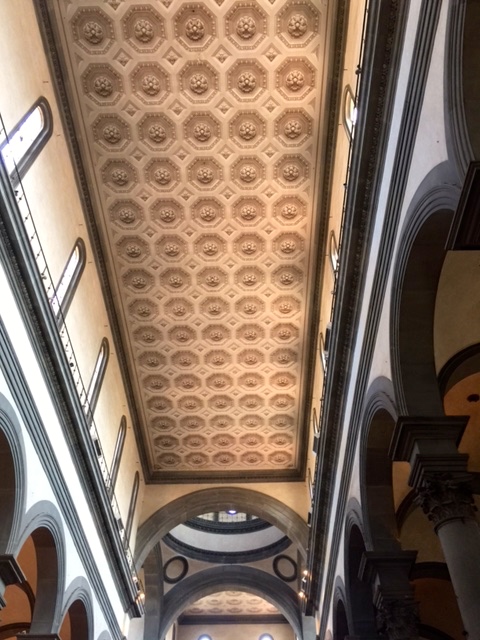
Brunelleschi began designs for this interior as early as 1428. The first pillars to the building were delivered in 1446, ten days before his death. After his death, his plans for the church were carried on by his followers Antonio Manetti, Giovanni da Gaiole, and Salvi d’Andrea; the latter was also responsible for the construction of the cupola.
Unlike the Basilica of San Lorenzo, where Brunelleschi’s ideas were thwarted, his designs were carried through here with some degree of fidelity, at least in the ground plan and up to the level of the arcades.
The Latin cross plan was realized and the contrast between the nave and the transept, that caused such difficulty at S. Lorenzo, was here also avoided. The side chapels, in the form of niches, all the same size and 40 in number, run along the entire perimeter of the basilica.
Brunelleschi’s facade was never built and left blank. In 1489, a columned vestibule and octagonal sacristy, designed by Simone del Pollaiolo, known as Il Cronaca, and Giuliano da Sangallo respectively, were built to the left of the building. A door was opened up in a chapel to make the connection to the church.
Dominating the interior of the basilica is a Baroque baldachin with polychrome marbles, by Giovanni Battista Caccini and Gherardo Silvani, and placed over the high altar in 1601.
The church remained undecorated until the 18th century, when the walls were plastered. The inner façade is by Salvi d’Andrea, and has still the original glass window with the Pentecost designed by Pietro Perugino. The bell tower (1503) was designed by Bacio d’Agnolo.
The exterior of the building was restored in 1977-78.

The Augustinians had begun building the church and the convent in 1252. It was originally dedicated to Mary, All Saints and the Holy Spirit, changing by the end of the century to Mary, the Holy Spirit and Matthew.
The churches and convents of various mendicant orders were constructed with the financial support of the commune; the same is true for Santo Spirito beginning in 1267, and then again from 1292 to 1301.
The convent of S. Spirito became a center of scholarly activities and was recognized as Studium Generale of the Augustinian order in 1284. The first Rule and Constitutions of the Augustinians were approved in 1287 by the general chapter of the order that was held in Florence.

Santo Spirito was associated with the early humanism in Florence. One of the groups, led by Bocaccio, gathered there in 1360s and 1370s. Upon his death in 1375, Bocaccio bequeathed his library to the convent.
In the 1380s and early 1390s another circle of humanists met daily in the cell of Luigi Marsili (1342–94). Marsili had studied philosophy and theology at the Universities of Padua and Paris. He came into contact with Petrarch at Padua in 1370 and later became a friend of Bocaccio. This group included Coluccio Salutati (1331-1406), Chancellor of Florence from 1375. He soon became the central figure of the circle.
The most important of Salutati disciples was Leonardo Bruni (1370-1444), a future Chancellor of Florence. Another member of the circle was Niccolo de’ Niccoli, a humanist and an associate of Cosimo de Medici.


It was after the Florentine victory over the Milanese in 1397 during the second Milan war on the feast day of Saint Augustine (28 August), that the Florentine signoria decided to rebuild this church to honor the saint, and placing it under the patronage of the city.
Despite this decision, nothing much happened until 1434, when the operai retained the services of Filippo Brunelleschi. Work on the new church progressed slowly until March 1471. During the Descend of the Holy Spirit sacra rappresentazione organized by the laudese in honor of the visit of Galeazzo Maria Sforza the old church caught fire and was heavily damaged, together with parts of the convent.

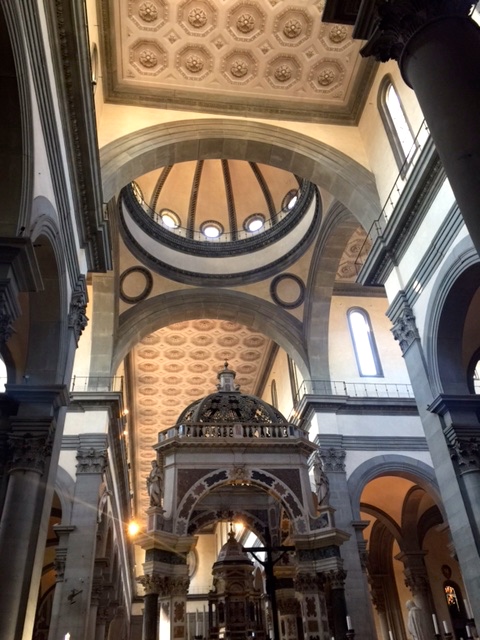
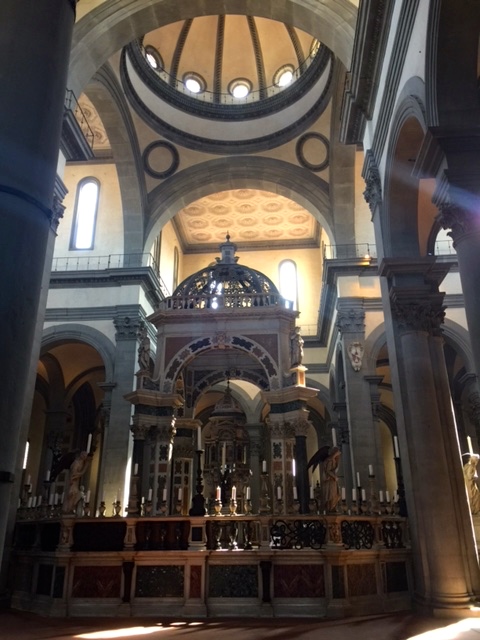
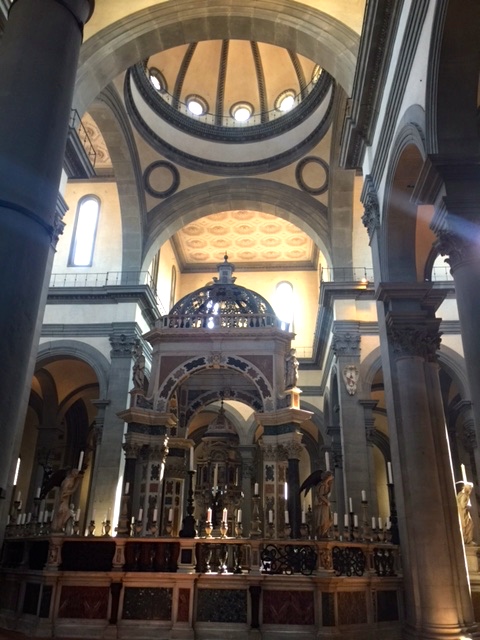
The walls of the cloister to the left of the basilica are lined with tombstones from all nationalities and eras.
The convent attached to Santo Spirito has two cloisters; they are known as the Chiostro dei Morti (cloister of the dead) and Chiostro Grande (Grand Cloister). The former takes its name from the great number of tombstone decorating its walls, and was built c. 1600 by Alfonso Parigi. The latter was constructed in 1564-1569 by Bartolomeo Ammannati in a classicistic style.
The former convent also contains the great refectory (Cenacolo di Santo Spirito) with a large fresco portraying the Crucifixion over a fragmentary Last Supper, both attributed to Andrea Orcagna (1360–1365). It is one of the rare examples of Late Gothic Art which can still be seen in Florence.
The room also boasts a collection of sculptures from the 11th-15th centuries, including two low reliefs by Donatello, a high relief by Jacopo della Quercia (Madonna with Child) and two marble sculptures by Tino da Camaino (1320–1322).
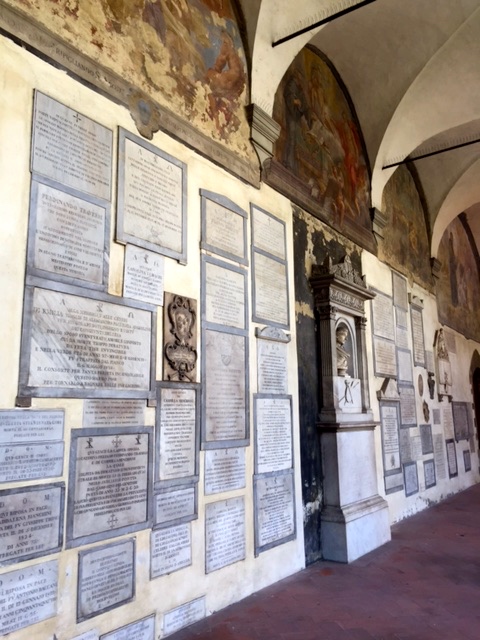
The central courtyard of the cloister is lovely and green.


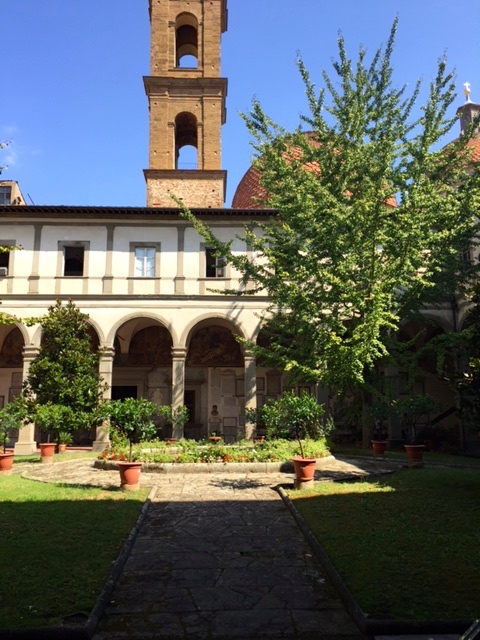
The bellower, as seen from within the cloister.
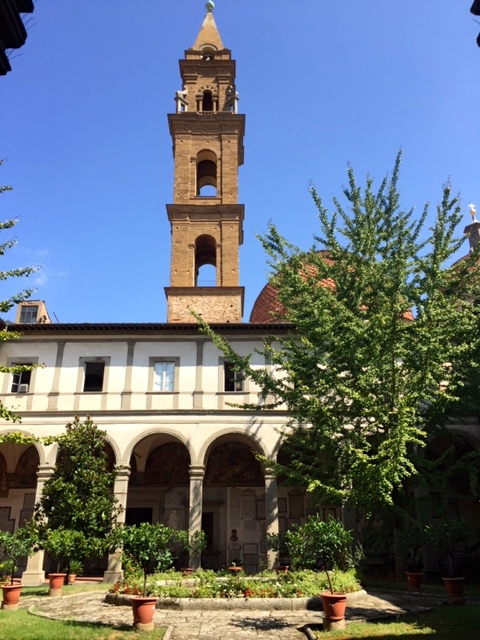

A fountain graces the center of the garden within the cloister.

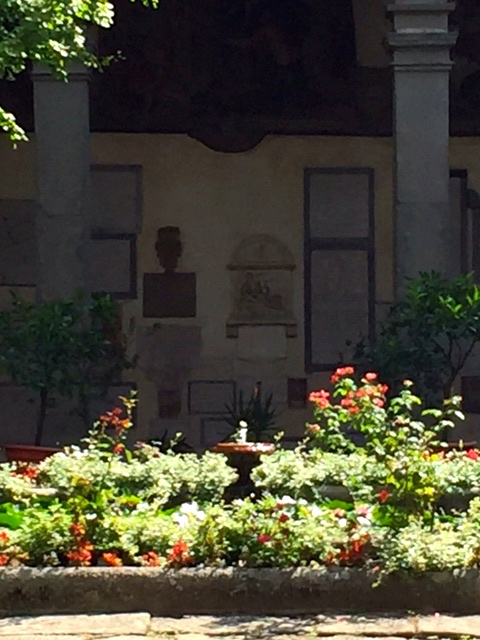
One of the hundreds of tombstones within the cloister walls.
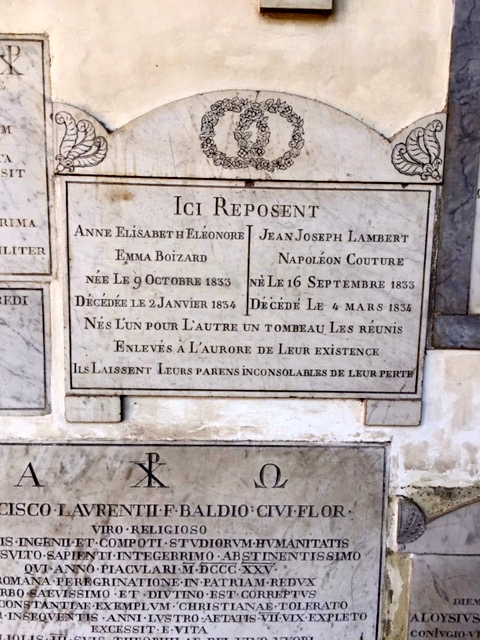
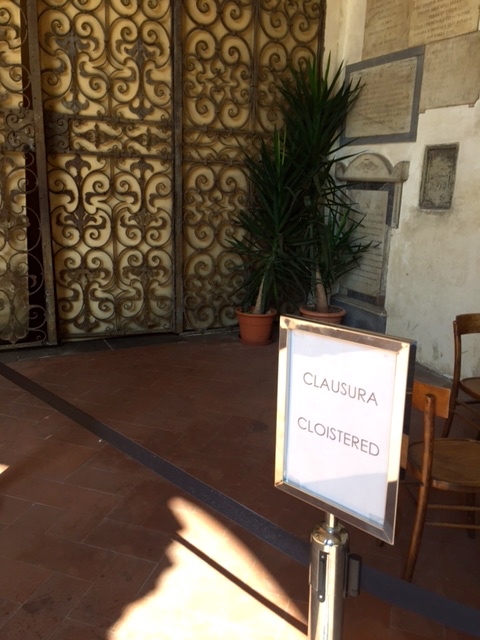

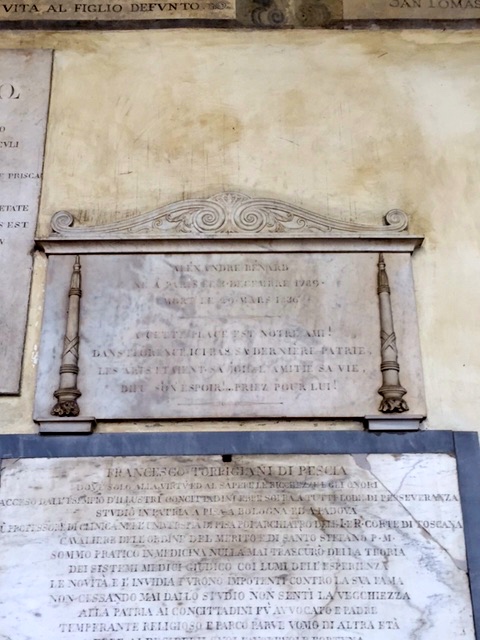
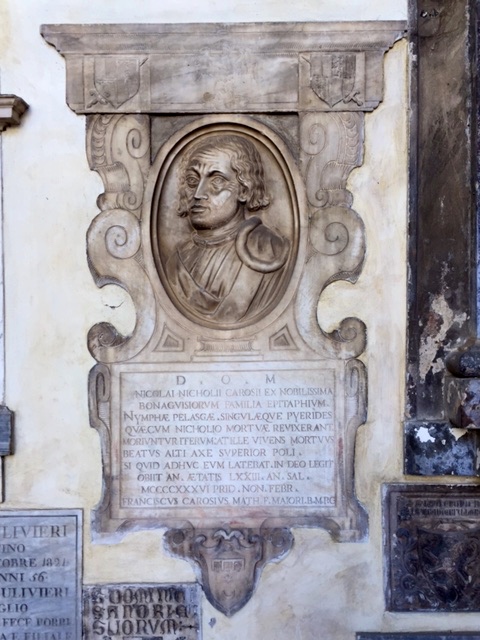
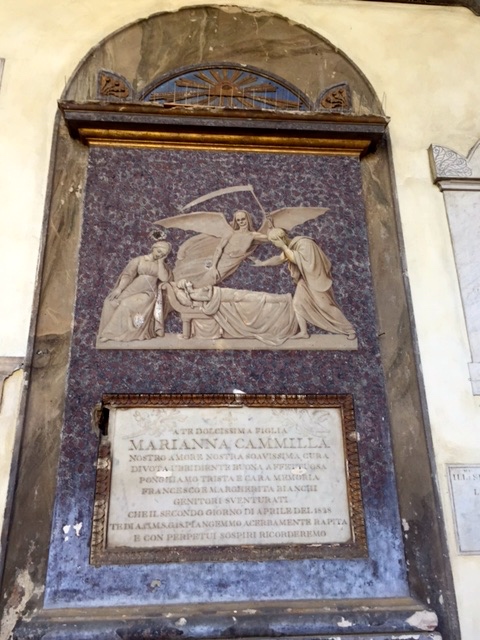
Michelangelo’s Crucifix
The young Michelangelo was allowed was allowed to make anatomical studies of the corpses coming from the convent’s hospital; in exchange, he sculpted this wooden crucifix, which was originally placed over the basilica’s high altar. Today the crucifix is in the octagonal sacristy that can be reached from the west aisle of the church.
Frescoes Crucifixion and The Last Supper were painted by Andrea Orcagna and his workshop in the 1360s.

